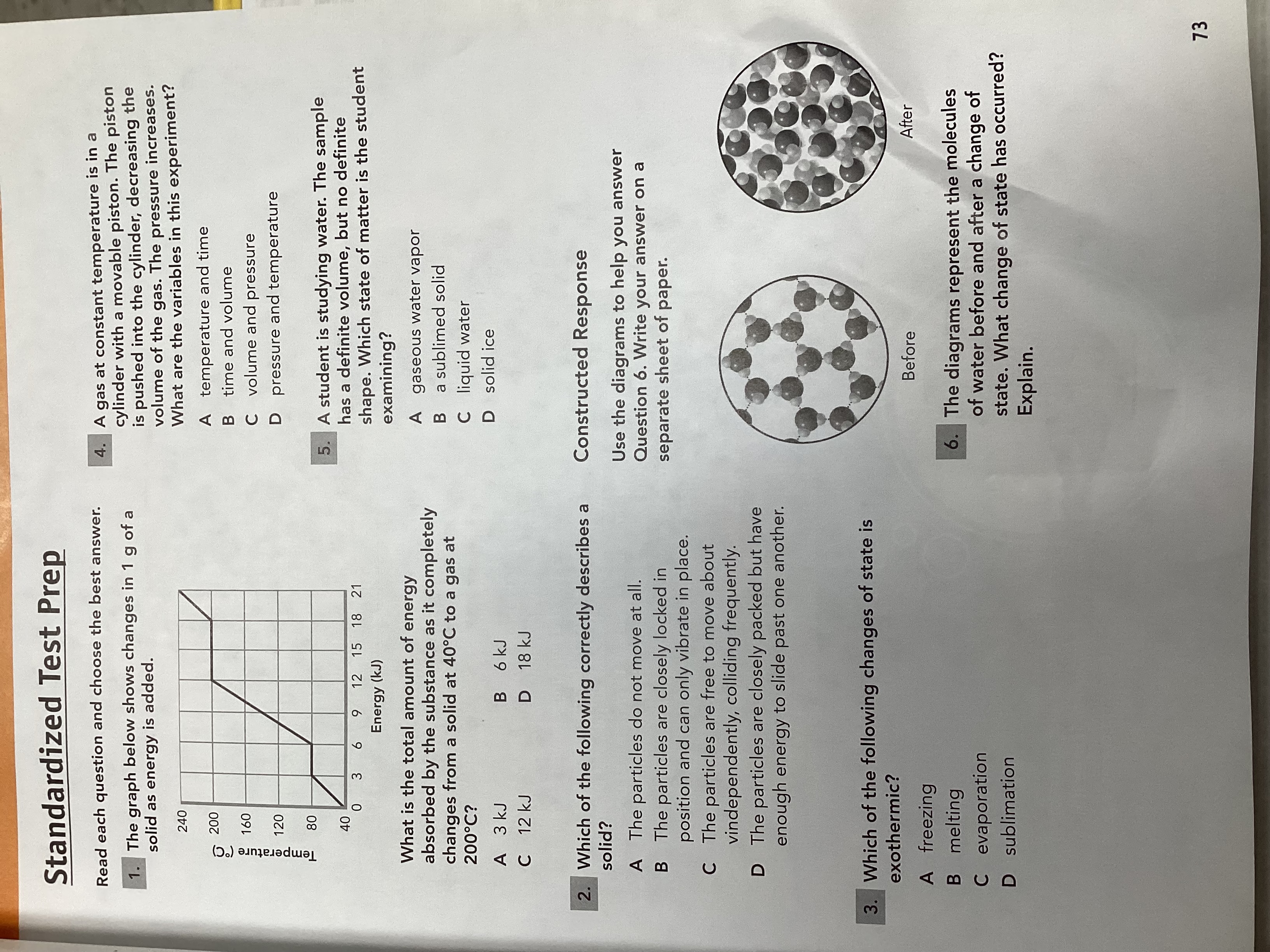1. What is the total amount of energy absorbed by the substance as it completely changes from a solid at 40°C to a gas at 200°C? 2. Which of the following correctly describes a sol... 1. What is the total amount of energy absorbed by the substance as it completely changes from a solid at 40°C to a gas at 200°C? 2. Which of the following correctly describes a solid? 3. Which of the following changes of state is exothermic? 4. A gas at constant temperature is in a cylinder with a movable piston. The piston is pushed into the cylinder, decreasing the volume of the gas. The pressure increases. What are the variables in this experiment? 5. A student is studying water. The sample has a definite volume, but no definite shape. Which state of matter is the student examining? 6. Use the diagrams to help you answer Question 6. Write your answer on a separate sheet of paper. The diagrams represent the molecules of water before and after a change of state. What change of state has occurred? Explain.

Understand the Problem
The questions are evaluating knowledge on states of matter, energy changes during phase transitions, and properties of solids and gases. Each question addresses a specific concept related to physical science, dealing with energy absorption, characteristics of solids, exothermic processes, and the behavior of gases under different conditions.
Answer
1. 18 kJ, 2. B, 3. A, 4. C, 5. C, 6. Melting.
- 18 kJ. 2. The particles are closely locked in position and can only vibrate in place. 3. Freezing. 4. Volume and pressure. 5. Liquid water. 6. Melting occurred from solid to liquid.
Answer for screen readers
- 18 kJ. 2. The particles are closely locked in position and can only vibrate in place. 3. Freezing. 4. Volume and pressure. 5. Liquid water. 6. Melting occurred from solid to liquid.
More Information
The energy absorbed on the graph corresponds to a total of 18 kJ. Freezing is exothermic as it releases heat. Liquid water has a definite volume but no definite shape.
Tips
Remember, exothermic processes release energy. Visualize particles to understand state changes.
Sources
AI-generated content may contain errors. Please verify critical information